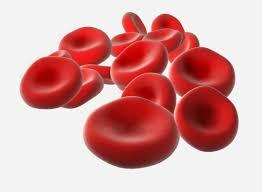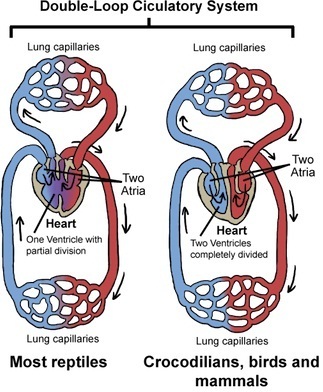12th Grade > Biology
BODY FLUIDS AND CIRCULATION MCQs
Total Questions : 59
| Page 5 of 6 pages
Answer: Option D. -> If all the other portions of the conducting system other than the SA node, produce action potentials at a much slower rate, it would maintain our heart rate.
:
D
Although all of the heart's cells have the ability to generate the electrical impulses (or action potentials) that trigger cardiac contraction, the sinoatrial node normally initiates it, simply because it generates impulses slightly faster than the other areas with pacemaker potential, all the other portions of the conducting system other than the SA node, produce action potentials at a much slower rate, it would maintain our heart rate.
:
D
Although all of the heart's cells have the ability to generate the electrical impulses (or action potentials) that trigger cardiac contraction, the sinoatrial node normally initiates it, simply because it generates impulses slightly faster than the other areas with pacemaker potential, all the other portions of the conducting system other than the SA node, produce action potentials at a much slower rate, it would maintain our heart rate.
Answer: Option A. -> Both A and R are correct and R is the correct explanation of A.
:
A
RBCs are usually biconcave and circular in shape. This gives them more surface area resulting in efficient binding of oxygen molecules. Moreover, due to the lack of organelles, the RBCs cannot and need not utilise the oxygen they carry for themselves. This also gives them flexibility.

:
A
RBCs are usually biconcave and circular in shape. This gives them more surface area resulting in efficient binding of oxygen molecules. Moreover, due to the lack of organelles, the RBCs cannot and need not utilise the oxygen they carry for themselves. This also gives them flexibility.

Answer: Option C. -> Inefficiency in transporting oxygen
:
C
In amphibians since oxygenated and deoxygenated blood get mixed, it decreases their efficiency to carry oxygen as well as energy generation. This is also a contributing factor for them being cold-blooded and not being able to maintain a constant body temperature.
:
C
In amphibians since oxygenated and deoxygenated blood get mixed, it decreases their efficiency to carry oxygen as well as energy generation. This is also a contributing factor for them being cold-blooded and not being able to maintain a constant body temperature.
Answer: Option D. -> Lymph and fat
:
D
Fats are absorbed from the digestive system by lymphatic vessels called lacteals, which contain a fluid mixture of fats and lymph called chyle. Fats are not absorbed in the blood capillaries as they are too small.So the fats enter the large pores of lacteals instead.
:
D
Fats are absorbed from the digestive system by lymphatic vessels called lacteals, which contain a fluid mixture of fats and lymph called chyle. Fats are not absorbed in the blood capillaries as they are too small.So the fats enter the large pores of lacteals instead.
Answer: Option B. -> Tachycardia - Heart rate is 70-75 beats
:
B
When the heart pumps blood into the systemic circulation, it does so with a huge amount of pressure. This pressure becomes a waveform that travels through the arteries ahead of the actual column of the blood which is pumped out. This waveform creates the throbbing sensation we feel when we palpate peripheral arteries. This is what we call the pulse. The normal pulse or heart rate is around 70 to 75 times per minute averaging at 72 beats per minute. Atrial fibrillation is where the ineffective pumping of the heart becomes insufficient to produce waveforms that can reach the periphery. Any heart rate above 100 beats per minute is considered tachycardia and anything below 60 beats per minute is called bradycardia.
:
B
When the heart pumps blood into the systemic circulation, it does so with a huge amount of pressure. This pressure becomes a waveform that travels through the arteries ahead of the actual column of the blood which is pumped out. This waveform creates the throbbing sensation we feel when we palpate peripheral arteries. This is what we call the pulse. The normal pulse or heart rate is around 70 to 75 times per minute averaging at 72 beats per minute. Atrial fibrillation is where the ineffective pumping of the heart becomes insufficient to produce waveforms that can reach the periphery. Any heart rate above 100 beats per minute is considered tachycardia and anything below 60 beats per minute is called bradycardia.
Answer: Option D. -> Tunica media - consists of smooth muscle and elastic connective tissue, the amounts and proportions of each depending on vessel type
:
D
The tunica media is the middle layer of an artery or vein. It lies between the tunica intima on the inside and the tunica externa on the outside.The tunica media, or middle coat, is made up principally of smooth (involuntary) muscle cells and elastic connective tissues arranged in roughly spiral layers.It has the autonomic control of which can alter the diameter of the vessel and affect the blood pressure.
:
D
The tunica media is the middle layer of an artery or vein. It lies between the tunica intima on the inside and the tunica externa on the outside.The tunica media, or middle coat, is made up principally of smooth (involuntary) muscle cells and elastic connective tissues arranged in roughly spiral layers.It has the autonomic control of which can alter the diameter of the vessel and affect the blood pressure.
Answer: Option C. -> blood pressure declines while it gets to veins
:
C
Veins carry blood back into the heart and for it less pressure is required. Therefore, veins have comparatively thinner walls than arteries.
:
C
Veins carry blood back into the heart and for it less pressure is required. Therefore, veins have comparatively thinner walls than arteries.
Answer: Option D. -> All of these
:
D
Double circulationoccurs in mammals, reptiles, birds etc, in which the blood passes through the heart twice before completing a full circuit of the body. Blood is pumped from the heart to the lungs and returns to the heart before being distributed to the other organs and tissues of the body. The heart is divided into two separate compartments to prevent oxygenated blood returning from the lungs from mixing with deoxygenated blood from the other parts of the body.

:
D
Double circulationoccurs in mammals, reptiles, birds etc, in which the blood passes through the heart twice before completing a full circuit of the body. Blood is pumped from the heart to the lungs and returns to the heart before being distributed to the other organs and tissues of the body. The heart is divided into two separate compartments to prevent oxygenated blood returning from the lungs from mixing with deoxygenated blood from the other parts of the body.

Answer: Option A. -> Fibrous
:
A
The atrioventricular septum is a septum of the heart between the right atrium (RA) and the left ventricle (LV).It is comprised of Fibrous Tissue.
:
A
The atrioventricular septum is a septum of the heart between the right atrium (RA) and the left ventricle (LV).It is comprised of Fibrous Tissue.
Answer: Option A. -> Basophils
:
A
Eosinophils have a bi-lobed nucleus. They are granulocytes and the granules have hydrolytic enzymes and peroxidases. They are important in eliciting allergic responses like in asthma and also parasitic infections. Basophils on the other hand accumulate wherever allergic reactions take place,including allergic asthma. Basophils are responsible for trigerring allergic reactions. Asthma and allergic diseasesoccur when the immune system improperly responds to harmless environmental substances such as pollen or mold. Common allergic reactions include eczema, hives, hay fever, asthma, food allergies, and reactions to the venom of stinging insects such as wasps and bee.
:
A
Eosinophils have a bi-lobed nucleus. They are granulocytes and the granules have hydrolytic enzymes and peroxidases. They are important in eliciting allergic responses like in asthma and also parasitic infections. Basophils on the other hand accumulate wherever allergic reactions take place,including allergic asthma. Basophils are responsible for trigerring allergic reactions. Asthma and allergic diseasesoccur when the immune system improperly responds to harmless environmental substances such as pollen or mold. Common allergic reactions include eczema, hives, hay fever, asthma, food allergies, and reactions to the venom of stinging insects such as wasps and bee.
















